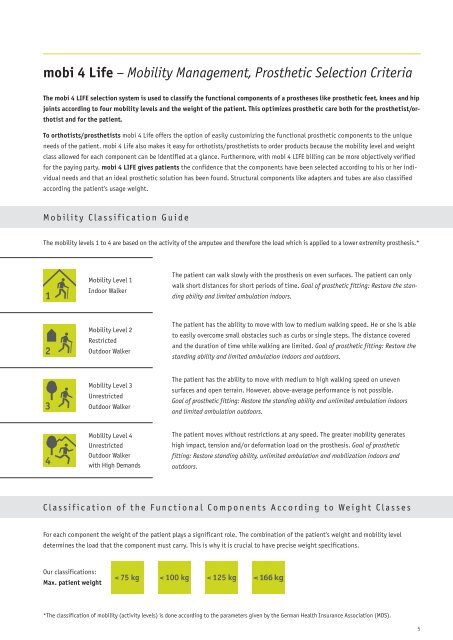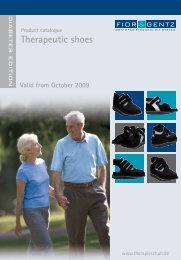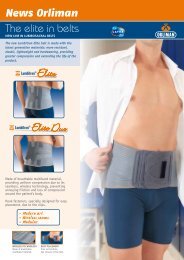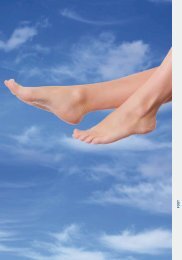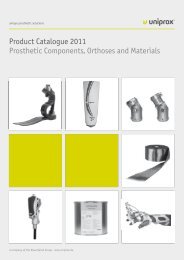1 Prosthetics - Orto Finland
1 Prosthetics - Orto Finland
1 Prosthetics - Orto Finland
Create successful ePaper yourself
Turn your PDF publications into a flip-book with our unique Google optimized e-Paper software.
mobi 4 Life – Mobility Management, Prosthetic Selection Criteria<br />
The mobi 4 LIFE selection system is used to classify the functional components of a prostheses like prosthetic feet, knees and hip<br />
joints according to four mobility levels and the weight of the patient. This optimizes prosthetic care both for the prosthetist/orthotist<br />
and for the patient.<br />
To orthotists/prosthetists mobi 4 Life offers the option of easily customizing the functional prosthetic components to the unique<br />
needs of the patient. mobi 4 Life also makes it easy for orthotists/prosthetists to order products because the mobility level and weight<br />
class allowed for each component can be identified at a glance. Furthermore, with mobi 4 LIFE billing can be more objectively verified<br />
for the paying party. mobi 4 LIFE gives patients the confidence that the components have been selected according to his or her individual<br />
needs and that an ideal prosthetic solution has been found. Structural components like adapters and tubes are also classified<br />
according the patient‘s usage weight.<br />
M o b i l i t y C l a s s i f i c a t i o n G u i d e<br />
The mobility levels 1 to 4 are based on the activity of the amputee and therefore the load which is applied to a lower extremity prosthesis.*<br />
Mobility Level 1<br />
Indoor Walker<br />
The patient can walk slowly with the prosthesis on even surfaces. The patient can only<br />
walk short distances for short periods of time. Goal of prosthetic fitting: Restore the standing<br />
ability and limited ambulation indoors.<br />
Mobility Level 2<br />
Restricted<br />
Outdoor Walker<br />
The patient has the ability to move with low to medium walking speed. He or she is able<br />
to easily overcome small obstacles such as curbs or single steps. The distance covered<br />
and the duration of time while walking are limited. Goal of prosthetic fitting: Restore the<br />
standing ability and limited ambulation indoors and outdoors.<br />
Mobility Level 3<br />
Unrestricted<br />
Outdoor Walker<br />
The patient has the ability to move with medium to high walking speed on uneven<br />
surfaces and open terrain. However, above-average performance is not possible.<br />
Goal of prosthetic fitting: Restore the standing ability and unlimited ambulation indoors<br />
and limited ambulation outdoors.<br />
Mobility Level 4<br />
Unrestricted<br />
Outdoor Walker<br />
with High Demands<br />
The patient moves without restrictions at any speed. The greater mobility generates<br />
high impact, tension and/or deformation load on the prosthesis. Goal of prosthetic<br />
fitting: Restore standing ability, unlimited ambulation and mobilization indoors and<br />
outdoors.<br />
C l a s s i f i c a t i o n o f t h e F u n c t i o n a l C o m p o n e n t s A c c o r d i n g t o We i g h t C l a s s e s<br />
For each component the weight of the patient plays a significant role. The combination of the patient‘s weight and mobility level<br />
determines the load that the component must carry. This is why it is crucial to have precise weight specifications.<br />
Our classifications:<br />
Max. patient weight<br />
*The classification of mobility (activity levels) is done according to the parameters given by the German Health Insurance Association (MDS).<br />
5


